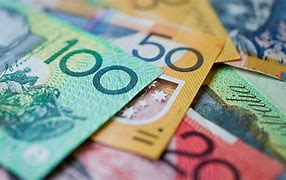The Australian Dollar (AUD) extended its losses, possibly driven by investors adopting a cautious stance ahead of the release of US Gross Domestic Product Annualized (Q1) data on Thursday and the Core Personal Consumption Expenditures (PCE) Price Index figures on Friday. These data events are anticipated to offer insights into the Federal Reserve's potential stance on interest rate adjustments.
The Australian Dollar may limit its losses due to the increase in the Australian 10-year Government Bond Yield to a four-week high of 4.52%. This shift reflects investor sentiment that the Reserve Bank of Australia (RBA) will maintain higher interest rates for longer. Additionally, the AUD might gain ground as one of its largest trading partners, China, has lifted bans on beef shipments from five major Australian meat producers, per Bloomberg.
Australia's Monthly Consumer Price Index, released on Wednesday, showed robust figures that could prompt the RBA to consider another rate hike. The minutes from the RBA's May policy meeting suggested that the central bank had contemplated a potential interest rate increase.
The US Dollar Index (DXY), which measures the USD against six major currencies, trades higher around 105.10, with 2-year and 10-year US Treasury yields at 4.98% and 4.61%, respectively, at the time of reporting. Risk aversion sentiment supports the US Dollar (USD), undermining the AUD/USD pair.
On Wednesday, the Fed Beige Book report covering April to mid-May showed that national economic activity experienced slight growth, with mixed conditions across industries and districts. The report also indicated that employment rose slightly, wage growth was moderate, and prices increased modestly as consumers resisted further price hikes.
Daily Digest Market Movers: Australian Dollar loses ground ahead of US data Australia's Private Capital Expenditure increased by 1.0% in Q1, exceeding expectations for a 0.5% rise and surpassing the previous quarter's 0.9% increase. As per a Bloomberg report, RBA Assistant Governor Sarah Hunter said at a conference in Sydney on Thursday that “inflationary pressures" are the key issue. “We’re very mindful of that." Hunter also stated that the RBA Board is concerned about inflation remaining above the target range of 1%-3%, suggesting persistent inflationary pressure. Wages growth appears to be near its peak. Bloomberg reported on Wednesday that Atlanta Fed President Raphael Bostic stated that the path to 2% inflation is not assured and that the breadth of price gains is still significant. According to the CME FedWatch Tool, the likelihood of the Federal Reserve implementing a 25 basis-point rate cut in September decreased to 41.7%, down from 49.4% a week earlier. Australia’s Monthly Consumer Price Index rose 3.6% year-over-year in April, surpassing the expected reading of 3.4% and the previous reading of 3.5%. On Tuesday, Neel Kashkari, President of the Federal Reserve Bank of Minneapolis, suggested that a rate hike might still be possible. Kashkari stated, “I don’t think anybody has taken rate increases off the table,” and expressed uncertainty about the disinflationary process, predicting only two rate cuts, per MSN. US Housing Price Index (MoM) for March was underperformed, with March's number coming in at 0.1% against 1.2% for February, where 0.5% was expected. Australia's Retail Sales (MoM) rose by 0.1% in April, swinging from the previous 0.4% decline. This growth fell short of market expectations of 0.2%. Technical Analysis: Australian Dollar could test the key level of 0.6600 The Australian Dollar trades around 0.6610 on Thursday. An analysis of the daily chart suggests the weakening of a bullish bias for the AUD/USD pair, as it has broken below the lower boundary of a rising wedge. The 14-day Relative Strength Index (RSI) is positioned at the 50 level, and further decline may confirm the momentum shift.
The AUD/USD pair could potentially move back into the rising wedge to target the four-month high of 0.6714, followed by the upper limit of the rising wedge around 0.6740.
On the downside, the immediate support appears at the psychological level of 0.6600, followed by the 50-day Exponential Moving Average (EMA) at 0.6584. A further decline could exert downward pressure on the AUD/USD pair, potentially driving it toward the throwback support region at 0.6470.













